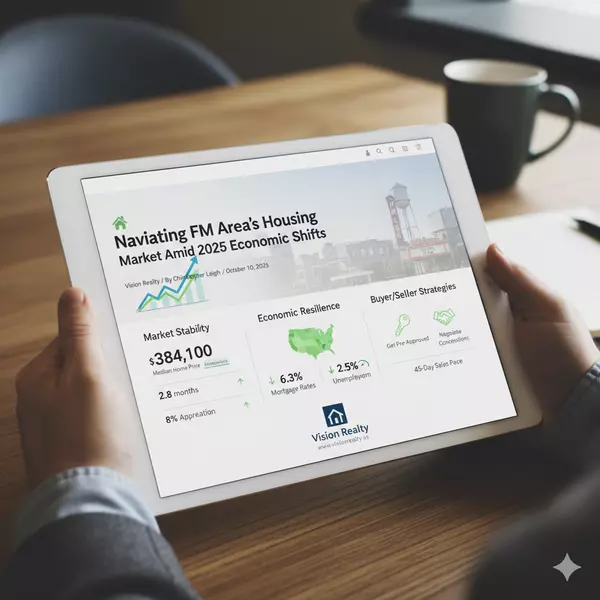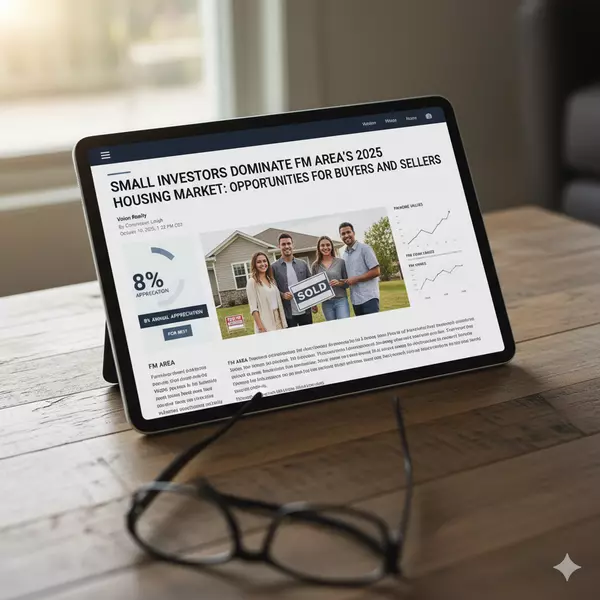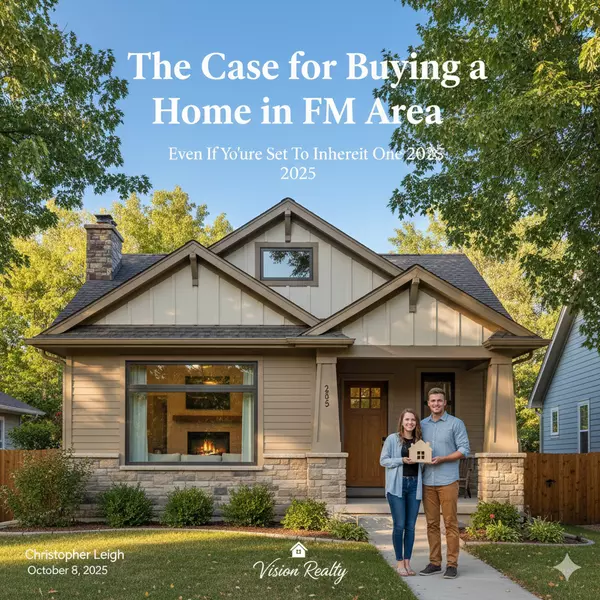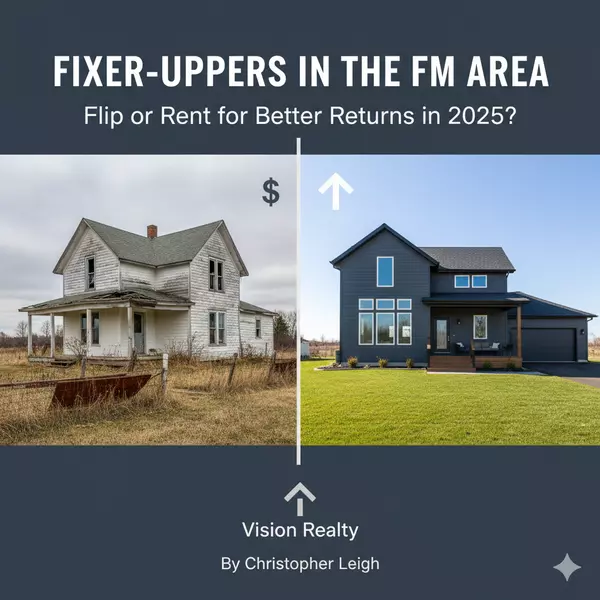Real Estate Market Trends: How Much Income You Need to Buy a Home in ND and MN in 2025
Real Estate Market Trends: How Much Income You Need to Buy a Home in ND and MN in 2025
By Christopher Leigh | August 25, 2025, 11:30 AM CDT
Even as the housing market becomes more buyer-friendly this summer, many Americans struggle to afford a home without exceeding the recommended 30% of income on housing costs. However, affordability varies by state, with the Midwest shining as a region where wages better align with home prices. In this Real Estate Market Trends post, brought to you by Vision Realty, we explore national trends and zoom in on North Dakota (ND) and Minnesota (MN), highlighting why these states are more affordable and whether now is the time to buy in the Fargo-Moorhead area.
National Affordability Landscape
Nationally, the typical U.S. household earns about 46% less than needed to afford a $439,950 median-priced home, based on July 2025 data from Realtor.com. This assumes a 20% down payment, 6.72% mortgage rate, and includes taxes and insurance, adhering to the 30% rule for housing expenses.
Affordability gaps range from 0.57% in Iowa to 138% in Montana. The most affordable states are primarily in the Midwest (Iowa, Illinois, Kansas, Ohio, Indiana), while the least affordable include Montana, New York, and Massachusetts, where minimum incomes needed exceed $170,000 for median homes.
Expert Tip: "Some states have gotten slightly more affordable over the last year due to wage growth outpacing home price growth," says Hannah Jones, Realtor.com senior economic research analyst [1].
ND and MN: A Comparison to the Nation
North Dakota and Minnesota stand out as more affordable than the national average, benefiting from lower home prices and steady wage growth in the Midwest.
-
Minnesota (MN):
-
Median list price: $399,000
-
Median household income: $88,572
-
Minimum income needed: $105,169
-
Affordability gap: 18.74% ($16,597 short)
-
Ranking: 9th most affordable state
-
MN's gap is about 59% better than the national 46%, with prices $40,950 below national. Urban areas like the Twin Cities drive higher prices, but rural options remain accessible.
-
-
North Dakota (ND):
-
Median list price: Approximately $310,000 (based on statewide trends; e.g., Fargo at $384,100, but rural areas lower) [2]
-
Median household income: $76,000 (2025 estimate) [3]
-
Minimum income needed: Approximately $81,800 (calculated using national methodology)
-
Affordability gap: ~7.6% (~$5,800 short)
-
Ranking: Not in top 10, but estimated among the top 15 most affordable, with a gap far below national (over 83% better).
-
ND's lower prices and stable incomes (tied to energy and agriculture) make it highly accessible, especially for rural lifestyles.
-
Comparison:
-
Both states have gaps under 20%, vs. national 46%, making them attractive for buyers avoiding "house-poor" status.
-
MN has higher prices and incomes, suiting urban buyers; ND offers lower entry points for rural lifestyles.
-
Vs. Nation: Lower prices ($40K-$130K below national) and wage growth outpacing price increases improve affordability since 2024.
Expert Tip: "Located in the highly affordable Midwest, these states boast incomes roughly in line with home prices," notes Jones [1].
Why the Midwest Remains Affordable – And Why Act Now
The Midwest's popularity stems from balanced growth: Wages have risen faster than home prices in many areas, narrowing gaps. In ND and MN, limited pandemic-driven influxes kept prices stable, unlike Montana's 138% gap from out-of-state buyers.
Is now the time to buy? Yes—affordability is improving moderately, but flat rates and prices mean waiting could increase competition if rates drop further. With inventory low and buyer-friendly conditions, pre-approved buyers in ND and MN can secure deals before fall surges.
How to Start Your Homebuying Journey in ND or MN
Ready to take advantage of Midwest affordability? Follow these steps:
-
Assess Your Income: Calculate using the 30% rule; tools like Realtor.com calculators help.
-
Get Pre-Approved: Connect with lenders for rates around 6.72% and explore local programs like NDHFA FirstHome.
-
Research Listings: Browse available options to find homes that fit your budget.
-
Tour Properties: Visit homes to evaluate fit with your financial plan.
-
Work with Experts: Partner with a Vision Realty agent to navigate trends and secure deals.
Frequently Asked Questions (FAQs)
Q: How affordable is MN compared to the nation?
A: MN has an 18.74% affordability gap, far better than the national 46%, with median prices $399,000 [1].
Q: What is ND's affordability gap?
A: Estimated at 7.6%, with median prices around $310,000 and incomes $76,000, making it highly accessible [2][3].
Q: Why is the Midwest more affordable?
A: Wage growth outpaces home prices, and lower demand keeps costs down compared to coastal states [1].
Q: Should I buy now in ND or MN?
A: Yes, with improving affordability and buyer-friendly markets; waiting risks higher competition if rates drop [1].
Q: How can I finance a home in these states?
A: Get pre-approved and explore programs like NDHFA for down payment assistance.
Conclusion
ND and MN offer exceptional affordability in 2025, with gaps well below national levels, making homeownership achievable without financial strain. As wage growth continues to close gaps, now is an opportune time to buy in the Fargo-Moorhead area. Partner with Vision Realty to find the right property and start your journey today.
Contact Vision Realty in Fargo-Moorhead
Christopher Leigh, Broker, GRI, RSPS, ePRO, REALTOR®
Phone: +1(701) 715-4747
Email: chris@visionrealty.us
Address: 509 Front St, Hawley, MN 56549
Website: visionrealty.us
(Vision Realty provides expert real estate services for buyers, sellers, and investors across Fargo-Moorhead.)
References
-
Realtor.com, “Mapped: How Much You Need To Earn in Every State To Buy a Home,” August 2025.
-
Realtor.com, “Fargo, ND Housing Market Overview,” July 2025.
-
USAFacts, “North Dakota Household Income,” 2025.
Disclaimer
Vision Realty adheres to all federal, North Dakota, and Minnesota fair housing laws, ensuring equal opportunity for all clients. Market data is accurate as of August 2025 but may change. Contact Christopher Leigh for the latest insights. This blog is for informational purposes and may be refined based on feedback.
Categories
Recent Posts










GET MORE INFORMATION

